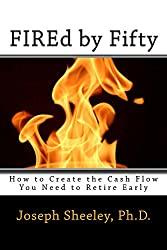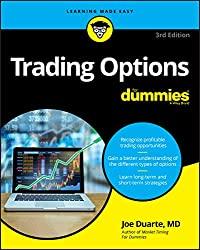Stock options are a great way to lose lots of money. The old joke is that the way to make a million dollars in options is to start with $2 million. Still, there are legitimate and even safe ways to use options that may come useful to you. We’ll go over some of these today.
Hey – if you like The Small Investor, help keep it going. Buy a copy of the SmallIvy Book of Investing: Book1: Investing to Grow Wealthy or just click on one of the product links below, then browse and buy something you need from Amazon’s huge collection. The Small Investor will make a small commission each time you buy a product through one of our links.
Find a great new book
Shop DVDs
Buy your Pet Supplies
Tools and Hardware
Best Selling Toys and Games
Patio Lawn and Garden Supplies
Clothing and Accessories
Baby Products
Health and Personal Care
Getting permission to trade options
Options are so risky that you actually need to get permission to use them. You’ll need to have a reasonable amount of extra money (so that if/when you mess up you don’t lose your home) and a fair amount of trading experience. You’ll need to contact your brokerage and let them know that you want to trade options. They’ll then send you an application to fill out listing things like assets, income, trading and investing experience, and your reasons for using options (hedging, income generation, speculating, etc…). It will then take a few days for them to review it and make a decision.
The Basics of options
If you’re thinking about using options, start with a good book on the topic. I would recommend Options Trading For Beginners: The Simplified Guide for All Beginners to Learn The Basics of Investment, Make Profits and Generate Passive Income with Options to get a primer on the basics of options. An option is a legal contract in which one person gives another person the right to buy a stock at a specified price (called a call option) or sell a stock at a specified price (called a put option) on or before a specified date (called the expiration date). This is all done fairly automatically with just a click of a mouse or a call to a broker since there is a regulated exchange that standardizes things like the prices and expiration dates.

Options are inherently volatile (read, risky) because they involve a great amount of leverage. Leverage is the control of a large asset while putting up a small amount of cash. For example, when you buy a home with 5% down, you can control a $500,000 home with only $25,000. If you sold the home a month later, depending on how eager buyers were and your negotiating skills, you could easily get $480,000 or $520,000 for the home. If you got $520,000, you’d have made $20,000 in just a month. This is only a 4% change in the price of the home, but because you only put $25,000 down, you’d have made an 80% profit. Conversely, if it dropped and you sold it for $480,000, you’d have lost 80% of your original investment. This is what happens with leverage: fast profits but also fast losses.
As an example of leverage using call options, as I write this Amazon stock is at $3444 per share. An option that would allow you to buy 100 shares at $3450 between now and Dec 17th (a week away) would cost you $4553. This means that for $4553, I could control $344,400 worth of Amazon stock. If the stock went up just 2% to $3513, I could use the call options to buy the shares and then sell them for a $6300 profit. So, for a 2% change in the price of the stock, I could make about a 40% profit! That could easily happen over a day or two. I could even see the stock jump 5% in a week on good news or even just regular market volatility for a $16,200, 265% profit. If the stock stays below $3450, however, my options will expire worthless and I’ll lose the whole $4553 I invested. This is what happens most often with options, they expire worthless.

Want all the details on using Investing to grow financially Independent? Try The SmallIvy Book of Investing.
What makes an option position safe?
So, if leverage is risky and options use leverage, making them a lot more volatile than individual stocks, how can they then be used relatively safely (when compared to buying and selling individual stocks). The answer is that you combine them with another position that offsets the risk of the option position. Something that will zig when our options zag. Something that will limit the amount we can lose on the option position and make it far less likely that we will suffer a loss. There are two such positions that we’ll discuss: Writing covered calls and writing collateralized puts.
Writing covered calls
The first technique we’ll discuss is covered call writing. A good book discussing this technique in far more detail is Covered Calls for Beginners. When we discussed calls before, the person who agrees to buy a stock for a certain price is called the call writer. He collects money for agreeing to buy the stock, called a premium. In our Amazon example, that was the $4553 I needed to pay to buy the Amazon call allowing me to buy 100 shares of stock for $3450 per share. Someone else was the option writer and would be on the hook to buy my shares if the stock went up.

Now, you may be thinking correctly that I would be taking a risk by buying the calls since I would be out my whole $4553 if Amazon didn’t trade above $3450 before the calls expired at the end of the week. In fact, the stock would need to go up to at least $3496 per share during the week for me to make a profit at all. Any less than that and I would have paid more for the calls than I’d make in profit on the stock sale. But the guy who wrote the calls could be taking a much bigger risk. There is practically no limit on how much he would need to pay for shares of Amazon on the market if the stock went up during the week and he needed to supply them to me. And the most he would get from me is the $3450 per share plus the $4553 he collected already. He could lose $20,000, $30,000, even $100,000 if the stock really jumped.
What if he already owned 100 shares of Amazon stock, however? In that case, if the stock went up and I exercised the calls to buy the shares for $3450 per share, he could just sell me the shares he had. He wouldn’t care what happened to the price of the shares because he wouldn’t need to buy them in the market. If he was happy getting $3450 for the shares because he had bought them back when the stock was at $2000 or something, it wouldn’t matter if the stock jumped. In fact, he would be taking less risk in writing the covered calls than he would be in just holding the shares since the premiums he collected from selling the calls would offset some of the loss he’d see if the shares went down in price.

After selling the calls to me, the stock would need to go down $43 per share before he started losing money. If the options expire worthless, his obligation to me would be done and he could go right out and write another set of calls, collecting another premium. Each time he wrote a new set of calls and collected a new premium, he would reduce his risk of a loss. It is like he’s collecting a dividend from the shares (plus he’d get to keep any real dividend the stock paid while he held the shares).
The biggest drawback to writing covered calls is that you limit your potential return. Once you write the calls, your maximum gain until the calls expire is fixed. If the stock shoots to the moon, you’re left with whatever amount you agreed to when you write the calls. If the stock really shoots up, you could also be in danger of a margin call, where your broker requires you either close out the call position or put up more money. If that were to happen, however, you could just sell the shares you had and buy a call on the market to close out the position early. Taxes also tend to be higher for option positions than they are for long-term capital gains.
Writing collateralized puts
If you write a put option, you agree to buy a stock from someone for a specified price if they want to sell before the expiration date. This can be risky because you could be on the hook to pay a lot more for a stock than you can sell it for if the stock drops before the expiration date. It is especially risky when people do what is called writing naked puts where they don’t have the cash needed to buy the shares. If the stock drops in price, they’d need to find the cash somewhere quickly.
If you’re planning to buy shares of the stock anyway, however, you can write what are called collateralized puts. Here you have the money needed to buy the shares in your account like you would have done if you were buying the shares, but instead of putting in an order to buy the shares, you write a put option. Now, if the price of the stock drops or stays below the specified price until expiration date, you’ll end up buying the shares. Because you’ll collect the premium for selling the puts to the buyer who owns the stock, you’ll generally end up paying less for the shares than you would have if you had entered an order to just buy them.
If the stock goes up in price and/or stays above the specified price, the options will expire worthless and you’ll just keep the premiums. You can then write another set of puts for the stock and collect another premium. Here you’re collecting a payment several times each year just for having the money available. You’ll generally make a much bigger return doing this than you would have collected if the money sat in a money market. In fact, you can collect money market interest while the cash is sitting there as well!

What is the risk here? If the stock drops, you’ll be forced to buy the shares at the price you agreed to even though the shares might be at a much lower price. Still, you would have bought the shares anyway and you’ll lose less than you would have if you had bought the shares since you’ll have collected the premium. The bigger risk is that the stock could go way up and you could miss out on the profit you would have had if you had just bought the shares.
My experience with these techniques?
I have used both of these techniques in the past. Periodically, I will write calls on a stock position that I have, generally when it has gone up substantially and I don’t expect it to go much higher for a while because earnings need to catch up to the price gains, but I also don’t want to sell the shares necessarily. If I do end up selling shares because the calls are executed, I’ve made a profit on the shares plus I get a little extra from the premiums. If the stock falls back a bit, I’m in a better position than I would have been if I had just held the shares as I would have done otherwise. If the stock just sits there, I can just keep collecting premiums.
Usually I’ll end up selling the shares because they go up and the buyer uses the calls to buy the shares. Often when that happens I’d have done better just holding onto the shares and selling them than I did with the calls. Other times I’ll sell one or two sets of calls and then see the shares go back down a ways, at which time I just sit pat and wait for earnings increases to carry the shares higher again.
If I want to buy shares but am not super excited about a stock, I may write a collateralized put. I often end up with the shares at a bit of a discount using this technique. Sometimes the stock shoots up and I miss out, and other times the stock continues to fall and I see a bit of a loss, but, again, I would have seen a loss anyway if I had just bought the shares. In general I do better by just buying and selling shares without using options, but I am also taking on more risk by doing so.
Have a burning investing question you’d like answered? Please send to [email protected] or leave in a comment.
Disclaimer: This blog is not meant to give financial planning or tax advice. It gives general information on investment strategy, picking stocks, and generally managing money to build wealth. It is not a solicitation to buy or sell stocks or any security. Financial planning advice should be sought from a certified financial planner, which the author is not. Tax advice should be sought from a CPA. All investments involve risk and the reader as urged to consider risks carefully and seek the advice of experts if needed before investing.
